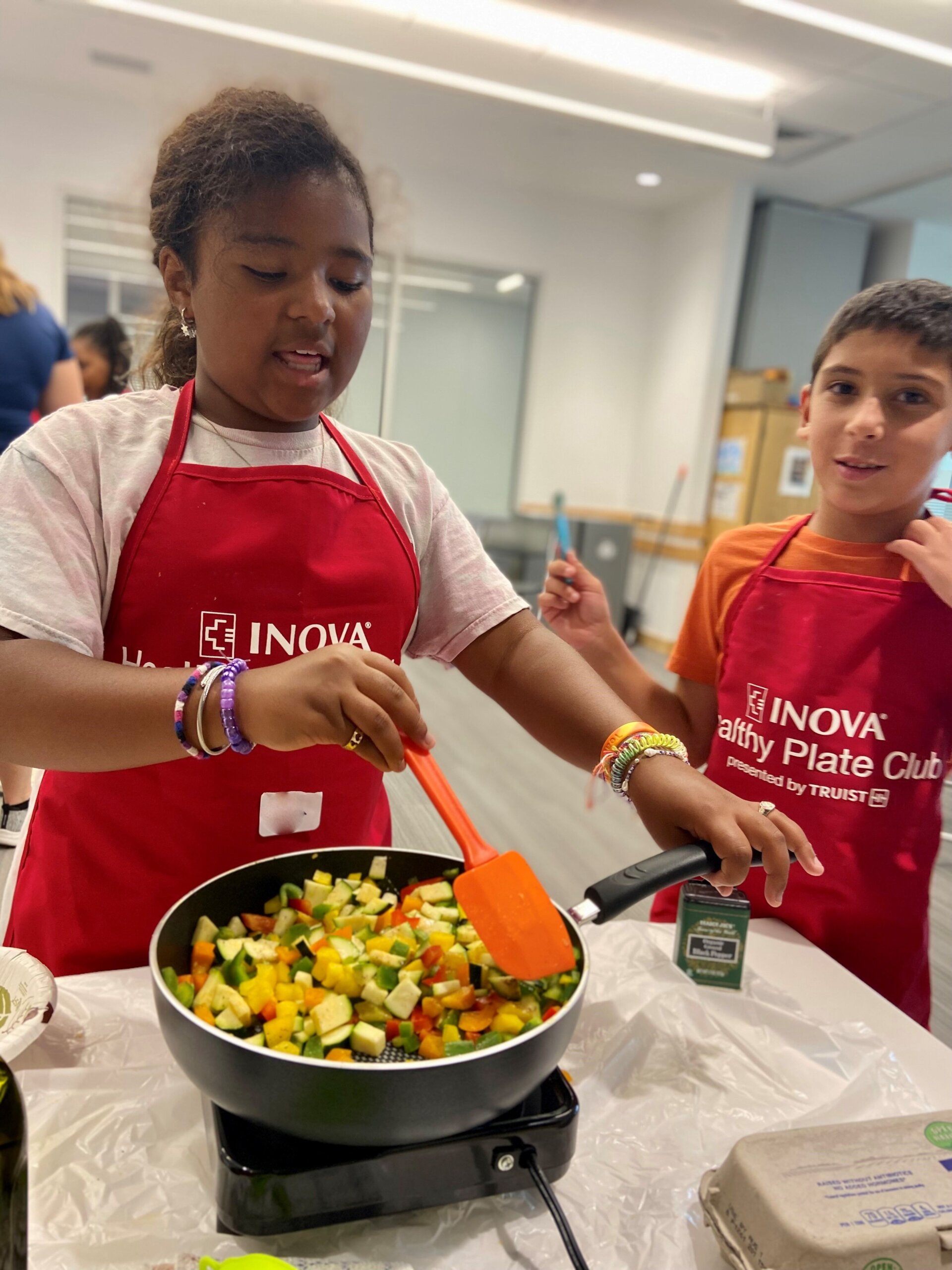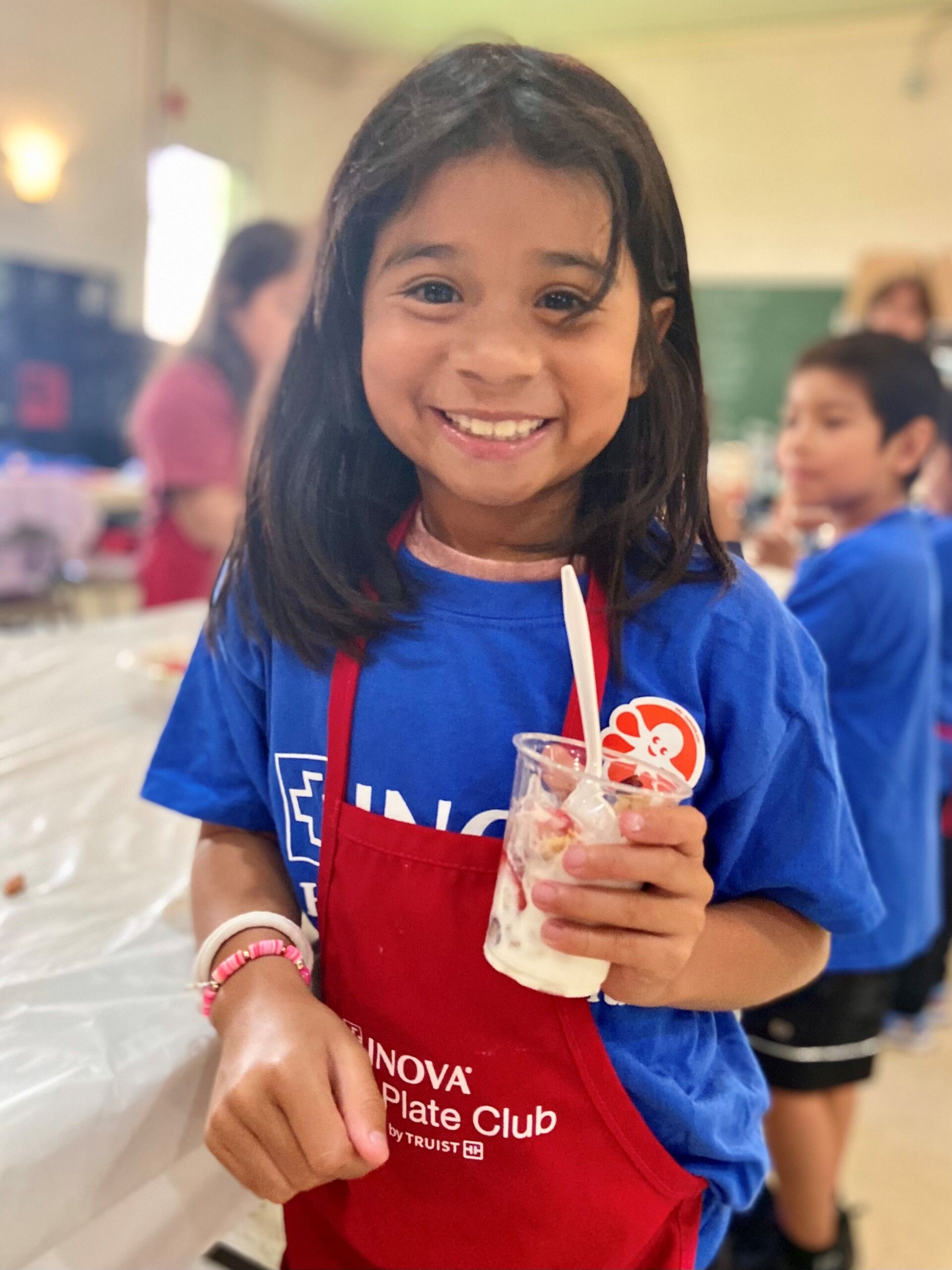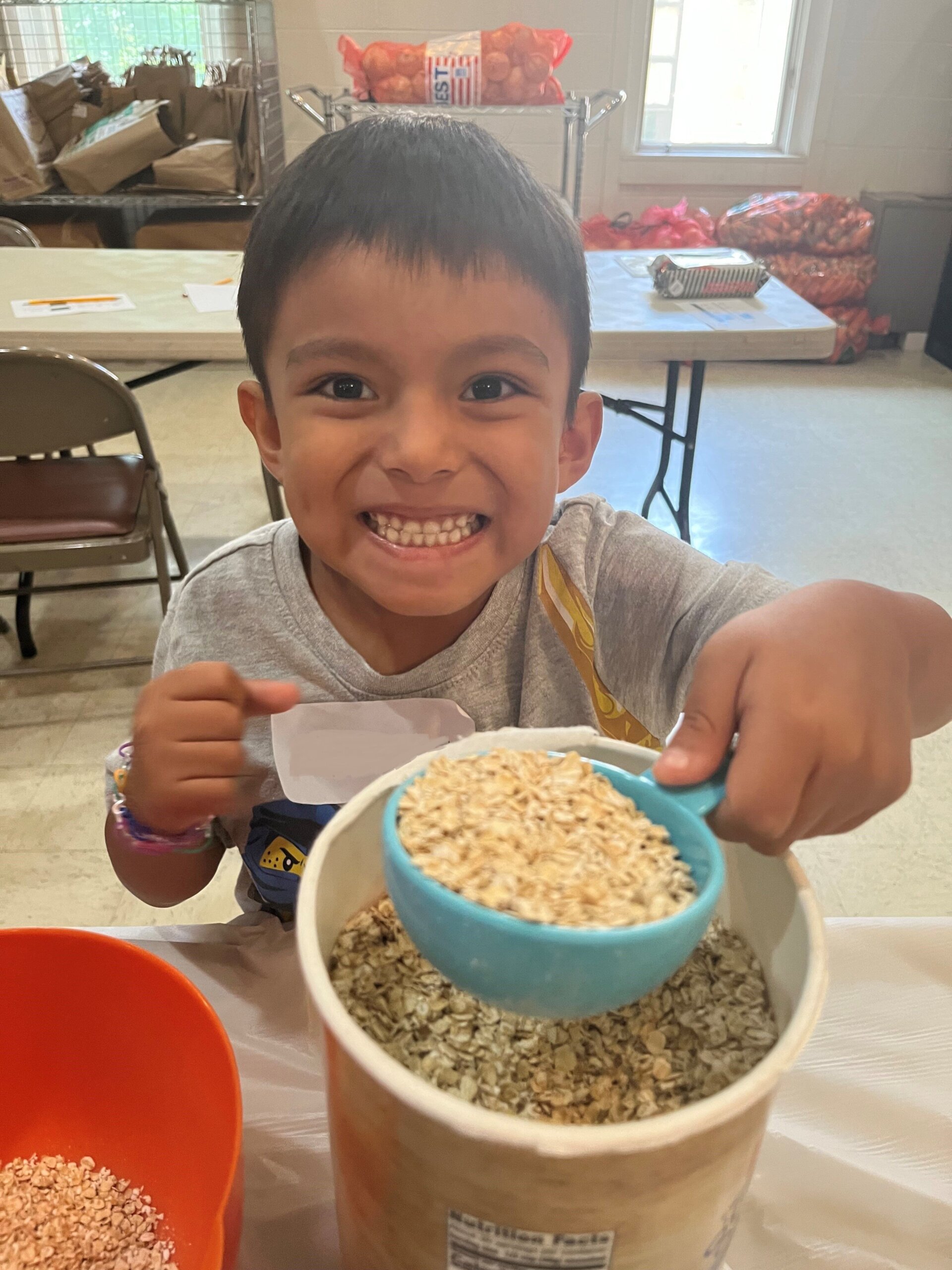This content is sponsored by Truist.
Kale. People tend to love it or hate it. Surprisingly, baked chips made from the curly greens are perhaps the most popular recipe with kids who take part in the Inova Healthy Plate Club.
That’s right, kids love kale chips. It’s by far the most beloved recipe among participants in the Healthy Plate Club, said Kate Garsson, who launched the program in 2016 for Innova Health.
“When I run into students years later, it’s the one I hear they’re still making,” said Garsson, manager of program outreach and education for Inova’s Community Health Division.
The goal of the program is straightforward, she said. “Inova Healthy Plate Club is a program that teaches kids, specifically from under-resourced communities and Title I schools, how to learn to love vegetables, how to cook and basic nutrition skills.”
And the club does that by doing.
Getting up close and making meals with vegetables
 The kids who participate either in person or through a virtual five-week program get to both cook and taste vegetables, everything from kale to brussels sprouts and more.
The kids who participate either in person or through a virtual five-week program get to both cook and taste vegetables, everything from kale to brussels sprouts and more.
“We teach kids how exactly vegetables help their bodies — everything from your eyes, your brain, your memory, your heart, your bones, and there’s so many other ways too,” Garsson said. “And we make it fun.”
It doesn’t happen all in one, or even two, club meetings. “We all have been told growing up, and even as adults, ‘Eat more vegetables!’ But vegetables don’t always taste good if they’re not prepared the right way,” she pointed out. “And a lot of kids come into our program, and they say, ‘Oh, no, I don’t want to try vegetables.’ And we really try and turn that around.”
More than 2,000 kids — from kindergarten through high school — have taken part in the Healthy Plate Club since its inception at Francis C. Hammond Middle School in Alexandria, Virginia. The program partners with schools, community centers and apartment complexes to offer its cooking and nutrition classes.
“My goal is to bring this program to every single Title I school in our area,” Garsson said, adding that once the program finds a good match with a school or a community center, it will continue that relationship every year. It’s why the kids in the club usually do discover a love for vegetables — because they take part in the club year over year too, she said.
Delivering vegetables, a lot of vegetables
To teach hundreds of kids each year about vegetables, why to eat them and how to cook them, requires, well, a lot of vegetables.
 “We give the kids the food that they need to cook with us — thanks to Truist Foundation,” she said.
“We give the kids the food that they need to cook with us — thanks to Truist Foundation,” she said.
Truist and the Truist Foundation partner with the Inova Health program to provide food products as well as volunteers and even some fun little aprons to keep the kids tidy during club time.
“This support has made a huge difference in our program, allowing us to grow and expand and reach more children — everything from hiring staff to purchasing food,” Garsson said. “We all know food is very expensive right now, and we go through a lot of food when we’re cooking with large groups of children.”
Volunteers are also essential to the program. Truist employees have helped out in the club, directly working with the kids, rolling up their sleeves and chopping and preparing vegetables, she said.
“We really need people who are going to come week after week, so they not only get familiar with the students, but because it’s really important for our kids to see that there are caring adults who come every week just for them,” Garsson said.
Fostering a lifetime love of veggies
The club knows it’s succeeding, both from the stories its young participants share as well as stories shared by parents, who also often take part in the virtual club programs that Inova launched during the COVID-19 pandemic.
It’s continued that virtual program because the club can invite students from all over and reach a lot more students, Garsson said.
“We cook live on Zoom. We see kids in their kitchens at home with their parents, and even their siblings get involved. We’ve heard great feedback from parents. … In our post-class surveys last year, over 90% of parents said they’ve seen their kids eat more vegetables as a result of the program and make healthier choices.”








